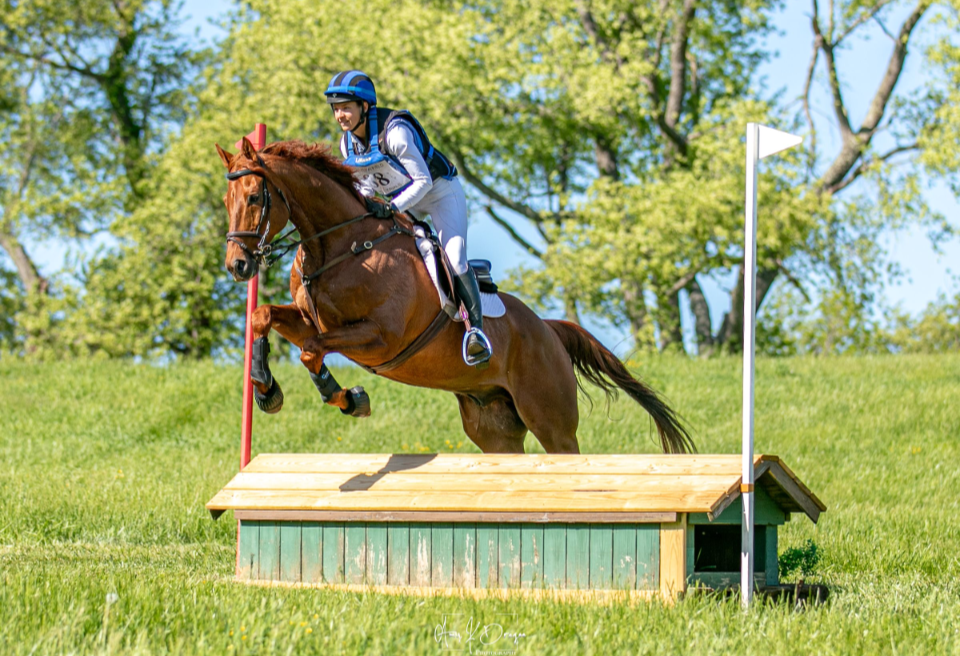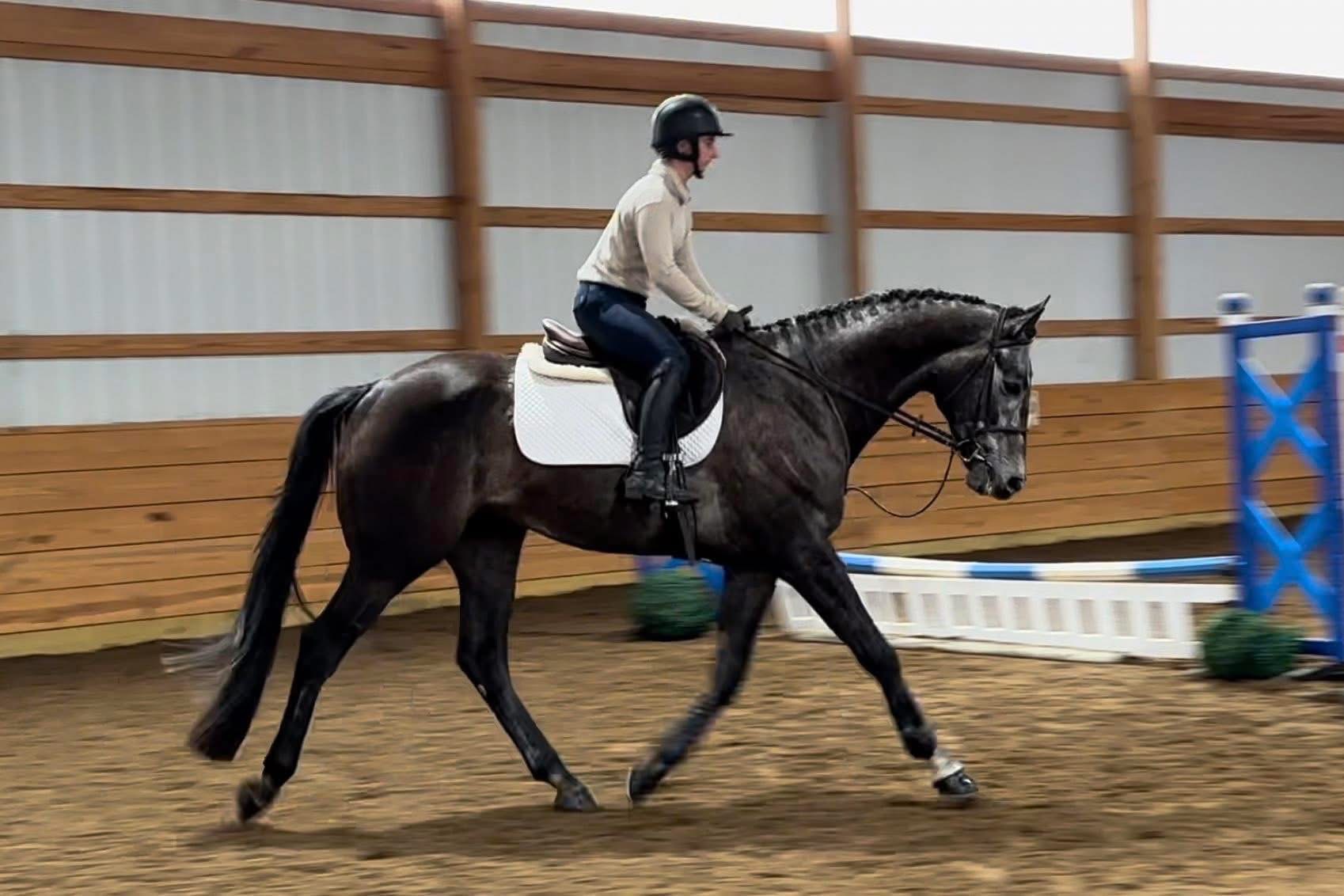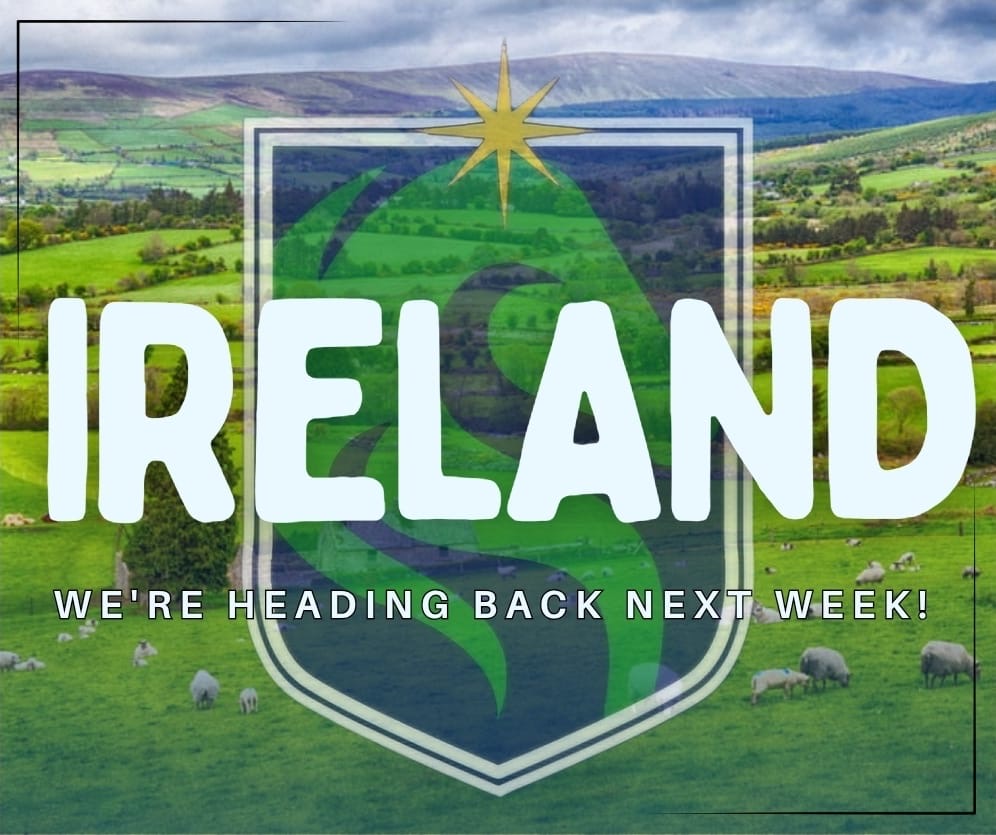
Amanda Gantz and Must Dash. Photo by Uniquine Photography.
“It’s about how horses and the eventing community helped me beat cancer.”
Two years ago, hunter rider turned eventer Amanda Gantz was handed news that would turn her world on its head: she had breast cancer.
“I was only 30 years old. I do not have any family history, so it came as a shock because I was fit, active and healthy. I felt good. Your world comes to a crumble when you hear those words. It’s not something you expect at this edge,” Amanda said.
She began Chemotherapy immediately. “Before I started my treatment I thought, ‘I’m going to ride my horses. I’m going to take care of my horses. I’m going to do everything I did before,’” she explained. “I expected it to make me more tired, but I could not have been more wrong.”
Despite her optimistic attitude, the first round of Chemotherapy proved to be a bigger beast than she could’ve known. “The first treatment knocked me so hard on my ass,” Amanda recalled bluntly. “I lost my hair in 12 days. I became so sick I could not take care of myself. I couldn’t even get up to get a drink of water. That was the most heartbreaking part for me, that I couldn’t even get myself off the couch.”
By September 2015, Amanda was at her sickest. Laying in her hospital bed, she couldn’t get up without assistance, and she found herself so fatigued that she could barely make out a sentence. Little did she know that two years later she’d be tackling her dream of competing at the American Eventing Championships, a journey forged by determination, equine encouragement, and an army of supporters.
Renewed Determination
As Amanda was hunkered down facing this new, incredible battle, her super-husband Zack was keeping the rest of their life under control, which included caring for their three horses. One day, he mentioned that Ellie, Amanda’s retired hunter mare, wasn’t acting like herself. Concern for horses lit the fire which propelled Amanda through her fight.
“That was motivating for me. I thought, ‘I have to figure this out. I have to get somewhat healthy,’” she said. “I had three weeks in between treatments, and the final days right before my next set of treatments I would gain enough strength to be independent.”
“I will never forget my first trip to the barn,” she continued. “As soon as I came around the corner she heard my voice she flew out of her stall. She fawned all over me and knickered at me like I was her baby. She could not have been more gentle. I threw my arms over her neck and cried and said, ‘I’m going to get through this.’”

Photo courtesy of Amanda Gantz.
Being a true horsewoman, cuddling wasn’t enough and she declared that she would take her horse out to the pasture, despite the fact that she needed her husband’s help to get in and out of the car. Thankfully, Ellie seemed to understand, and didn’t put a toe out of line.
“The way I shuffled, you would’ve thought I was an 80-year-old woman. She so gingerly walked out to the field. There was slack in the rope the whole time. She was the turning point for me – knowing I could be a part of that and help him a few days before my treatment helped me a lot,” she smiled.
From then, Amanda stayed focused on getting back in the barn, and after a few months of treatments, she decided she needed even more horse therapy.
Around the time of her diagnosis, Amanda and Zack had purchased an off-the-track Thoroughbred. Journey of Hope, named in honor of Amanda’s brave battle, stood as a reminder for her that she could overcome this phase of her life and one day be back in the tack. During her treatments, her trainers Jackie and Kyle Smith kept “Bubba” in work.

Amanda Gantz, Kyle Smith and Journey of Hope. Photo via Amanda Gantz.
“One day I told my husband, ‘I haven’t been on a horse in months I can’t take this anymore I need to get on,’” Amanda chimed. “He gave me the same look as when I asked to lead the horse out.”
Comfortably plopped in the gator, Amanda eagerly watched Kyle school Bubba around cross country until he rode up and said, “Get your helmet on you’re going to cool him for me.”
One careful move at a time, Amanda finally found herself where she belonged: atop her horse. “I watched him gallop my horse over crazing things that would’ve scared me even when I was healthy. I was so weak if this horse sneezed I don’t think I had the strength to stay on,” she explained. “But for the inside of my soul I needed to do it.”
“I could barely get on him myself,” she continued. “I needed both of their assistance to get on him. He carried me around like I was an eggshell – just leisurely walked around in the open field. It was 10 minutes, but enough to heal me.”
Amanda may have felt weak when she got on, but in a matter of moments she was empowered once again.
“Just sitting on him, I said, ‘I’m going to be here again. I’m going to do this next year. I’m going to do this next year. I’m going to kick cancer’s ass.’ That was another night that proved to me how much animals really know,” she affirmed.
Amanda’s Army
In addition to her horses, Amanda is quick to recognize the many people who band together to support her. Dressed in pink, Amanda had an army on her side.
“The eventing community in my area was just amazing. It’s not just your friends and your family. People would call and text and visit. They would ride with pink ribbons on their saddle pad and say, ‘I rode for you this weekend,’” she elaborated.

Photo by Annette Dubec Venuto.
Kyle and Jackie Smith’s Stone Gate Farm held their annual hunter pace in her honor. It was carefully scheduled around her treatments to ensure Amanda was physically comfortable to come watch. Decked out in personalized ear bonnets, ribbons and as much pink as possible, Amanda’s friends took part in the ride for the cure.
Amanda’s husband Zack was the largest pillar of this group, her Rock of GIbraltar. “I still haven’t figured out how he managed to keep up with everything. He kept his full time job – and kicked ass at it! – he took care of his duties around the house, my duties around the house, three horses, two dogs, two cats me. He was my superman through this whole thing.” Amanda doted.
Amanda’s mother, Mary Lee, was also there every step of the way. She traveled from Pennsylvania and took Amanda to every treatment, sitting with her for the entire process which lasted anywhere from six to eight hours.

Bonnets for the hunter pace. Photo via Amanda Gantz.
In addition to her local family and friends, Amanda also got invaluable support from one of her riding idols who got her interested in the sport: Debbie Rosen. Amanda’s first glimpse into eventing was at the Kentucky Three-Day Event in 2010, where she watched Debbie complete the four-star seven weeks after completing chemotherapy. Five years later, these two found themselves spending hours on the phone together as Debbie inspired Amanda to kick on.
“That type of support for me was so overwhelming. It made me feel like, ‘OK today you’re so sick you can’t even get your own glass of water, but these people care and they’re pushing for you. You’re going to get back to this some day,’” she remarked. “You don’t think that when you’re so physically sick on the couch, so everybody’s support really made a huge difference.”
Back in the Tack
By January 2016, Amanda had finished her treatments and was recovering from a lengthy surgery, but she would still face mountains in her path to the saddle.
“I had a long healing process after the surgery, longer than I expected,” she shared. “I found out I wasn’t just healing from the surgery. There were other problems I’d have to learn to fight with. I started working out on my own, and once my strength comes back I said, ‘My God, I’m getting back in the saddle come hell or high water.’”
Amanda remained steadfast in her determination, but after withstanding intense treatments her body had some catching up to do. “Getting back into it was a complete struggle. I felt like I was learning how to ride for the very first time. There were some days I would ride for 15 minutes and every joint in my body would ache,” she described.

Amanda Gantz and Journey of Hope.
When she hit these roadblocks, Zack was always there to put things in perspective and remind her just how far she’d come. “It was eye-opening. Things like that make the frustration a lot easier,” Amanda said.
Besides general difficulties in weakness as she regained strength and stamina, Amanda also struggled with complications from the surgery and chemotherapy. In December 2015, she underwent a nine-hour procedure where doctors removed nearly all the lymph nodes from the right side of her body. This made her unable to completely pull her shoulders back due to the incisions, and left her right arm susceptible to injury from repetitive movements and small cuts and scrapes.
She also suffered nerve damage in her left hand from the Chemotherapy, which means her left hand is often numb – making dressage even more challenging than usual.

Photo by Miranda Akins/Photography in Stride.
Fortunately though all of this, Amanda’s doctors were on board with her pursuit of riding, so long as she was as careful as possible. But as she was getting back into it, Amanda realized that her changed skill level meant Bubba, her off-track Thoroughbred might be too much horse for her now. She faced what then seemed like the hardest challenge in her recovery: giving up her horse. Luckily for her, the future looked bright again after finding the 9-year-old Appendix gelding, Must Dash.
“He’s a little more at my speed now that my body has changed. He has been a very good boy for me. His gaits are nice and easy on my joints. He’s never in a hurry. He’s more of an easier, quiet-ride type,” Amanda said of Dash. “So when I started riding this year my whole life outlook changed. After something like this I said my mantra is go big or go home. I’m going to get it done.”
Amanda continued to get stronger, and by July of 2016 she got another piece of news that would change her life: she was cancer-free.
Ticket to Tryon
Amanda and Dash made their debut at recognized competition in May where they finished on their dressage score. Then, with the USEA American Eventing Championships being held at the Tryon International Equestrian Center in Mill Spring, N.C. for the last time, she set her sights on qualifying, and less than a month later she had. Finishing third at May Daze at the Kentucky Horse Park this summer sealed the deal on her trip to Tryon.
“I had the best show of my life. It brought me to tears. My husband even pointed out that two years ago I was sick in the hospital and now I’m cantering across Rolex ground. When I got qualified it was icing on the cake,” she grinned.
“When I go to AEC and trot down centerline, I’m taking everybody with me – everyone who called, text, sent cards, visited me. There are so many people that have so much to do with me getting to that point, they don’t even realize I think. Just getting there in my eyes is a victory in itself. I know it’s going to be a very emotional experience down there. Not just like wow you did good, you qualified – it makes me take a step back and realize what I’ve been through and who has been behind me to get to this point. It’s overwhelming.”

Photo by Amanda Gantz.
“When I see all the things people did for me, like those ear bonnets. I still cry when I pull those out. It has definitely been a journey. You take it day by day. Life is a little different, but I am so happy with everyone in the eventing community and the way they rallied around me makes it all that much more sweet.”
And so, Amanda faces the next stage of her life as she has the past: with grit, undeniable optimism and an army of support behind her.
Amanda also has big plans to head to the Hagyard Midsouth Three-Day at the end of the fall. She is planning to put a “Pink Team” together for the team challenge, and is looking for company! She’s looking to make up a team of anyone affected by cancer, so if you’d like to join her, please contact her by email [email protected]








































